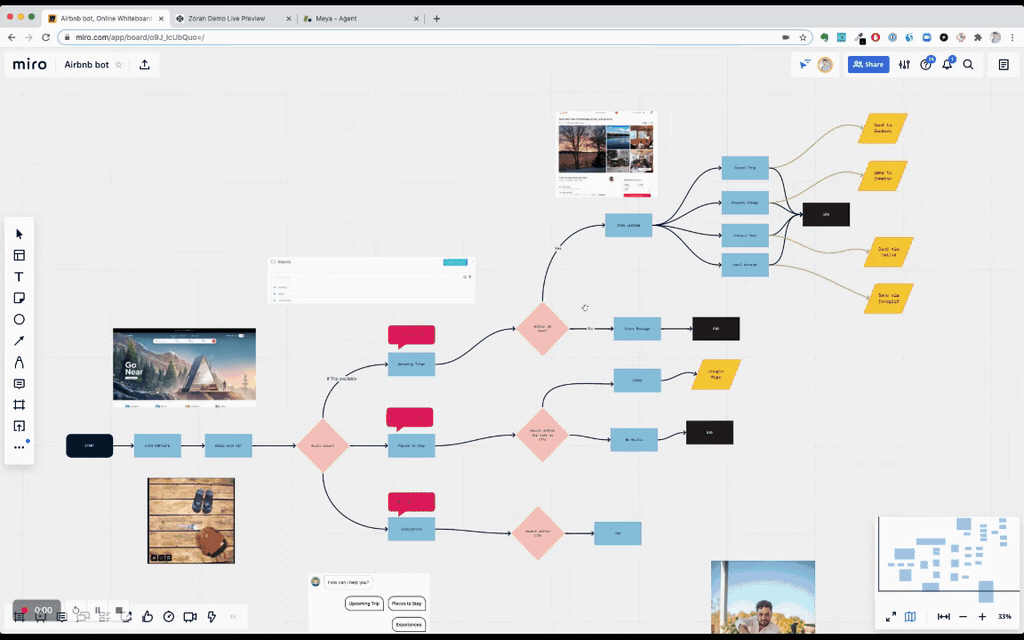Think back to the last time you had a really positive or pain-free customer experience (CX) online. There’s a good chance it was powered, at least in part, by conversational AI.
Whether we’re conscious of it or not, many of our favourite brands are using intelligent bots to automate processes behind the scenes to enhance our experiences, deliver easy solutions and personalize our service.
On top of delivering better CX, bots present a big opportunity for companies to reduce and eliminate up to 45% of manual processes, optimize resources and save an estimated $2 trillion in annual wages, according to McKinsey.
Unfortunately, if you’re like me, you’ve had some frustrating moments with bots, too – experiences that may have left you cursing at your computer screen. Certainly, as more companies try to integrate bots into their CX, some customers and brands are feeling underwhelmed.
Rather than being a failure of bots in general, it’s more likely those organizations simply aren’t using them to their full potential to smooth and automate steps in the customer journey.
Scale without sacrificing CX
Although workflow automation isn’t the first thing that comes to mind when most people think about bots, it should be since it’s the ultimate benefit that bots deliver. Despite the simplistic approach that many brands have taken, a helpful, well-made bot is actually workflow automation applied to customer experience.
A bot developed in this way disrupts two conventional beliefs:
- Myth 1: Workflow automation and bots are mutually exclusive. In fact, when done correctly, intelligent bots can take on more and more business tasks and steps in the user journey.
- Myth 2: CX scale and customer happiness are mutually exclusive. In reality, the opposite is true. By automating your CX, you have a significant opportunity to make your customers' lives better and employees' jobs easier.
Wondering how your bot can help you scale and improve CX at the same time? In the following sections, I’ll share some ideas and concrete examples for how to get there. While it may seem like an advanced—maybe even intimidating—solution, workflow automation using conversational AI is something you should consider incorporating into your customer and employee journeys.

Use case: Eliminating long wait times
The difference between easy, automated CX and friction-filled, manual processes came starkly into view earlier this year when the pandemic sent contact centers around the world scrambling to keep up with ballooning inbound customer requests.
Remember WestJet’s 38-hour wait times in mid-March 2020? No one wants that kind of journey for their customers, especially considering 32% will walk away from a brand they love after just one bad experience.
Example: Food delivery gone wrong
During the early days of the pandemic, when most delivery companies were totally slammed, I had my own rocky experience with a food delivery service.
After waiting hours, my order never showed up. When I typed my issue into the website chat, I was met by a simple FAQ-based bot that only compounded my frustration by showing me information on related topics, like how to track my order, check my transaction history and send a message to the driver. Tired, hungry and definitely not in the mood to chat, I was eventually dropped into a queue where I spent another 45 minutes waiting to talk to a human agent.
How workflow automation helps
In this scenario, conversational AI could have seamlessly completed a number of tasks to make my resolution quick and painless, including confirming my identity, receiving and processing my information, checking in with a human agent for approval, applying my refund and crediting the restaurant, all within a matter of minutes.
This example shows one of the biggest differences between a simple rule-based bot and an intelligent bot driven by workflow automation: quick, easy resolutions to customer issues with minimal need for human intervention. Having a smooth resolution process would have actually helped me move past that one bad experience and encouraged me to give the company another shot. Instead, I had to put up a hangry fight to get my money back and I haven’t used that delivery service since.

Use case: Moving beyond deflection
If you’ve had unsatisfying interactions with bots, it’s because the main goal of many chatbots is to deflect the low-hanging fruit. By answering basic questions, these bots take the burden off human agents. But most of the time, customers have needs that are far too complex for the bot to handle, and they end up escalating to a human agent anyway.
How workflow automation helps
Using bots for automation delivers so much more than deflection because it actually gets things done. Intelligent bots integrated with business workflows in-line can personalize conversations, authenticate customers, drive sales (even after hours), independently resolve customer issues, decrease wait times, boost customer satisfaction, lower the cost to serve, free human agents up for higher level tasks and more.
Want to see a more concrete example? Check out this workflow design to explore how we created an assistive conversational experience to automate a trip cancellation on Airbnb – a task that’s traditionally manual and time-consuming for human agents.

Use case: Enabling agent-bot collaboration
There are, of course, limits to automation and customers should always have the opportunity to talk to a human, especially if a bot can’t fulfill a request—but that shouldn't mean it's the end of the bot's usefulness.
How workflow automation helps
Bots with workflow automation can also be triggered by commands from human agents. In an agent-initiated flow, an employee starts the process then triggers a bot to complete the rest, saving time and money by minimizing context switching and getting things done faster.
Say a customer at a financial institution wants to open a bank account online. It’s a process that still requires approval from a human agent. But once that approval is granted, is it really necessary for the agent to take the manual steps to set up the bank account and communicate with the customer? With conversational AI, banks can automate the parts of the account opening and customer onboarding workflows that don’t require human attention.
And, while many companies use bots to focus on customer-facing interactions like sales, support and marketing, they can also transform processes in many other contexts. Just like agents can trigger bots to complete certain actions, back office employees can also converse with bots to automate manual or repetitive internal processes.
The takeaway
While we’ve barely scratched the surface of what bots can accomplish with workflow automation, it’s clear that organizations with an oversimplified or limited approach are missing out on significant opportunities. A well-designed bot is actually workflow automation applied to CX. And designing bots to work in this way can help you scale while improving CX at the same time.
If you’re in the process of choosing a bot platform, consider partnering with an experienced provider to develop a bot that goes beyond deflection and actually enhances both your customer journey and business processes using workflow automation.
